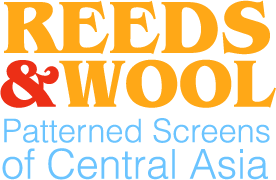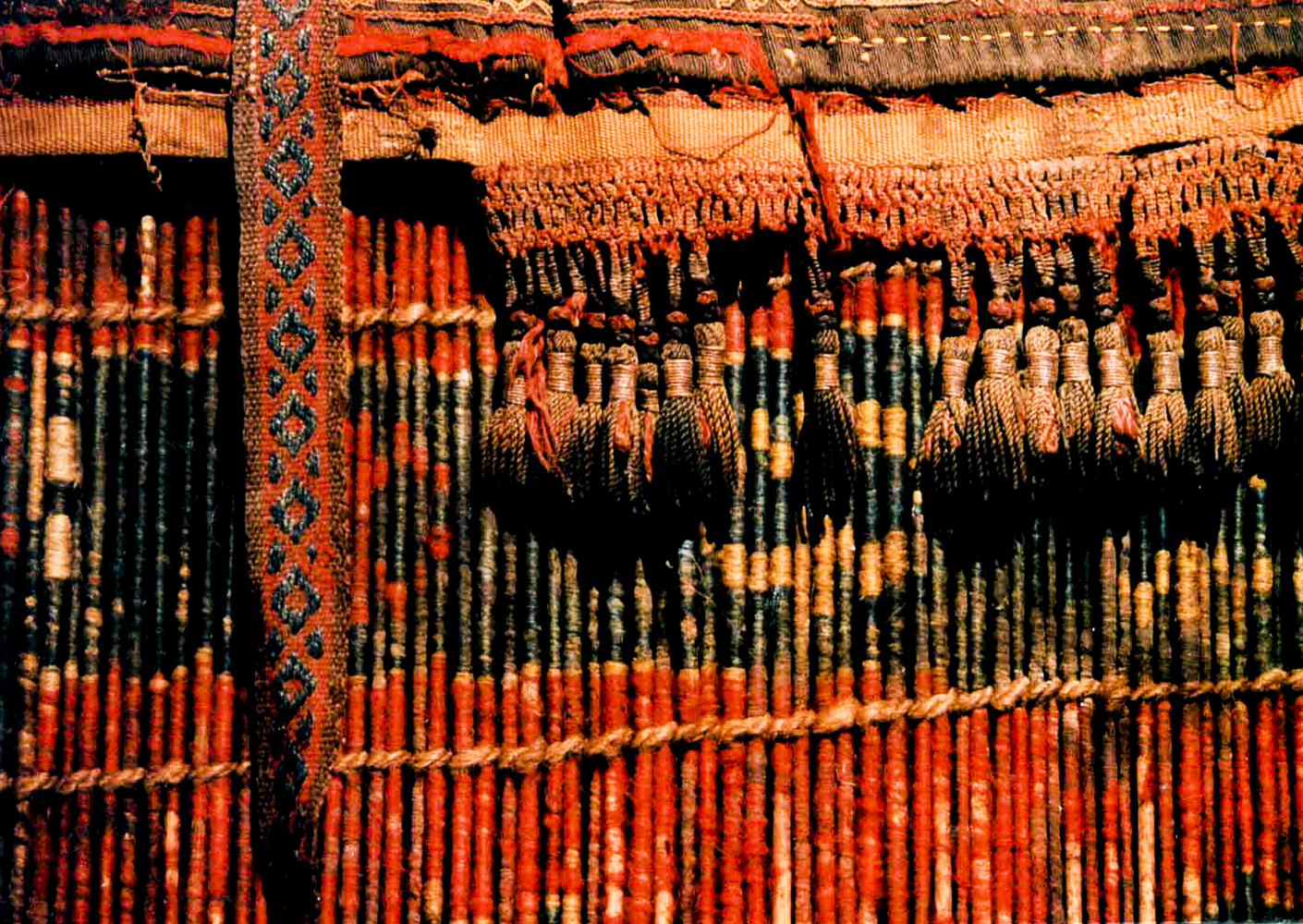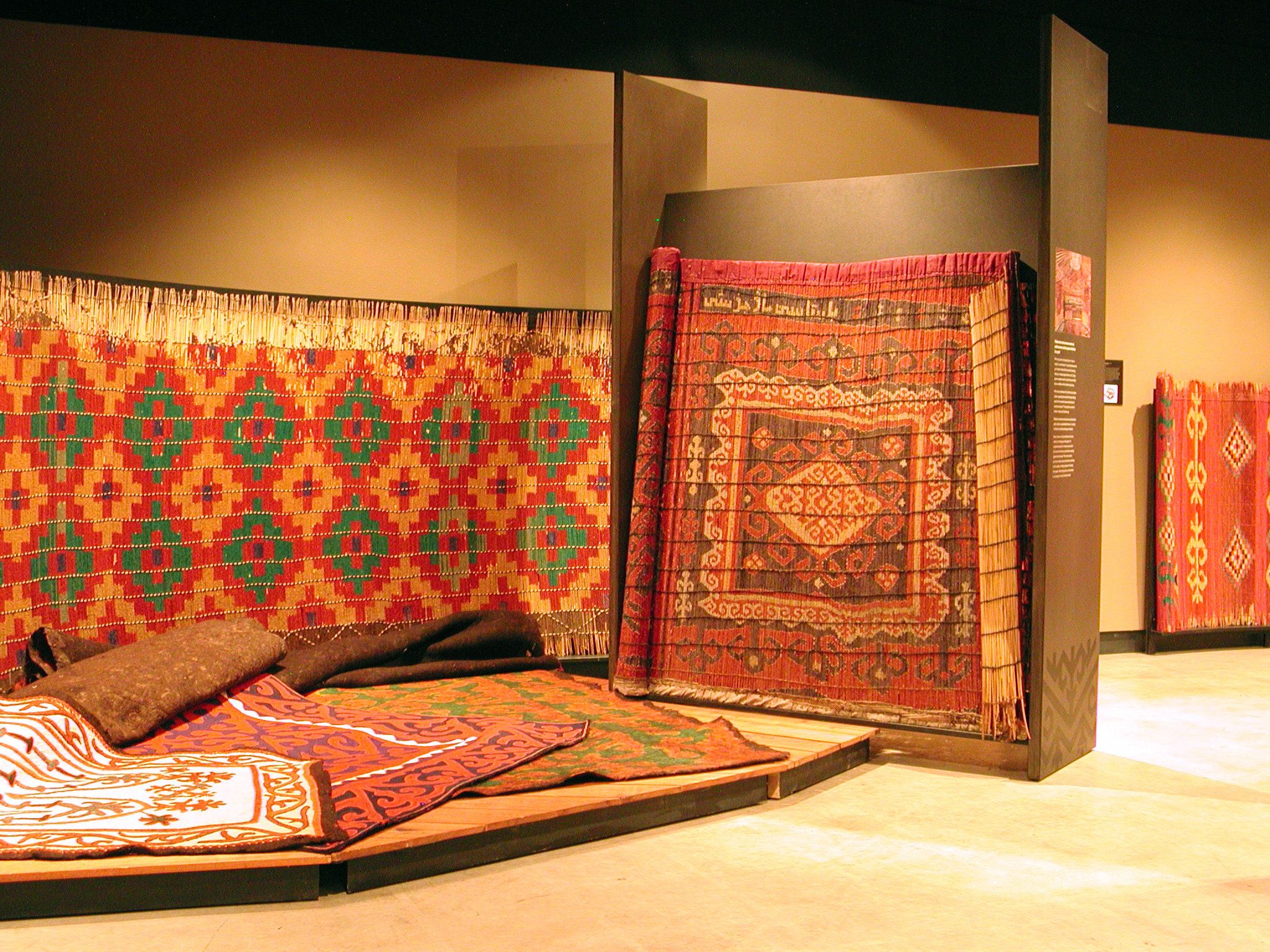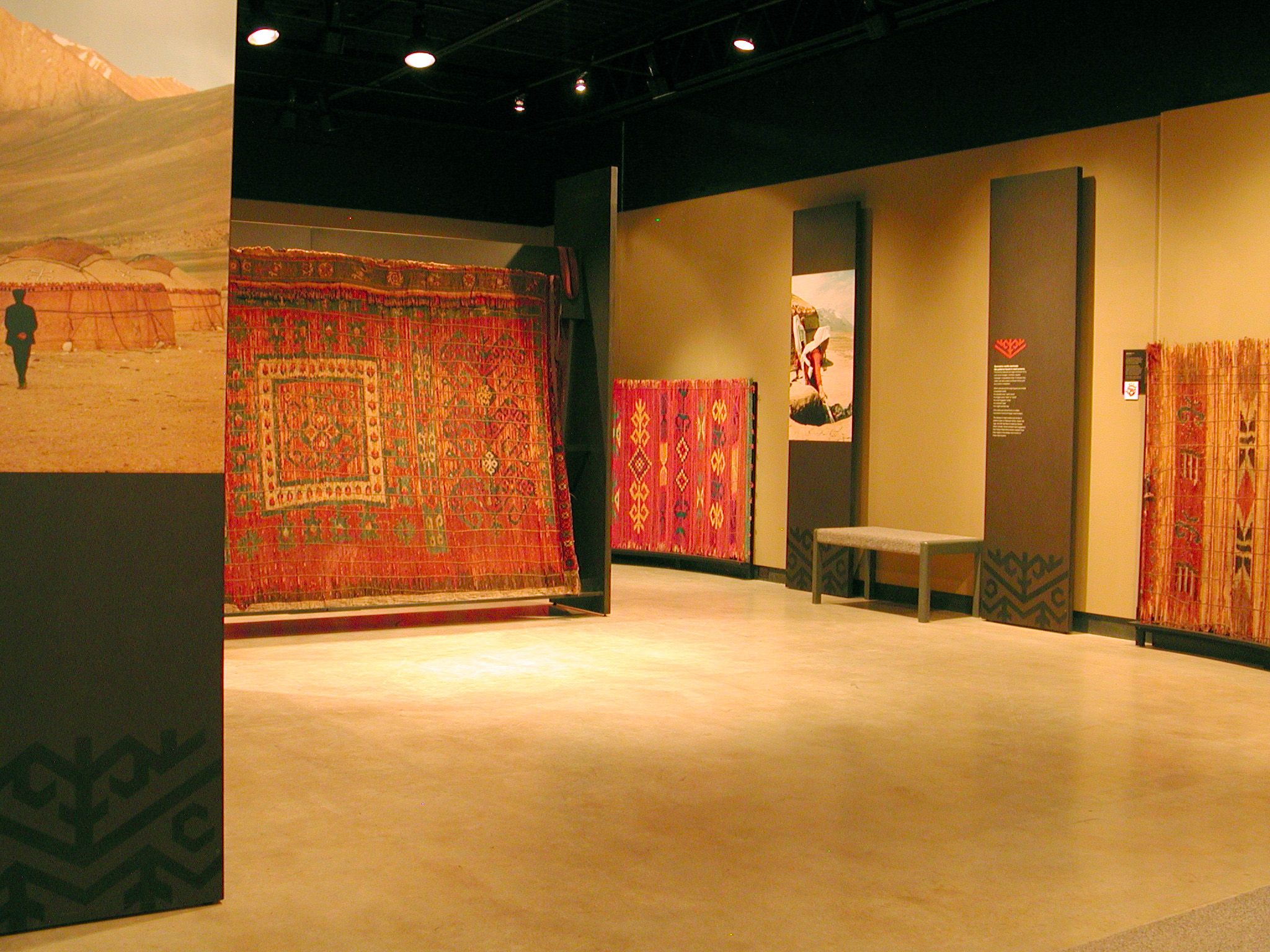Reeds and Wool is no longer available for booking.
Developed by Kauffman Museum in 1998, Reeds & Wool was produced in collaboration with John L. Sommer (1927-2020) to feature his extensive collection of reed screens. Sommer, following his retirement in 1990, became active in the world of Oriental rugs, and after hearing a conference lecture on the antecedents of rug motifs, visited Kyrgyzstan for the first time in 1992. Over the course of seven more visits in the following years, Sommer collected prime examples of antique reed screens and allied wool textiles and researched ethnographic materials on Kyrgyz nomads.
For 22 years, Kauffman Museum toured Reeds & Wool, sharing the story of this unique cultural tradition to museums across Kansas, Kentucky, and the Canadian provinces of Manitoba and Alberta.
The John L. Sommer reed screen collection is now held by the Nickle Galleries at the University of Calgary.

Reeds & Wool was the only exhibit in North America focused entirely on Kyrgyz reed screens.
These screens and their story were largely unknown outside of Kyrgyzstan while it was part of the Union of Soviet Socialist Republics (1920-1991). Richly textured and beautiful, reed screens were made by nomadic Kyrgyz women as traditional furnishings for their yurt dwellings.
The exhibit included a complete display system comprised of interpretive exhibit panels and display supports for the reed screens.
EXHIBIT GALLERY
EXHIBIT THEMES
Reeds & Wool contained 13 Kyrgyz screens (chiy)–produced in the 19th and 20th century–from the Sommer-Krieger Collection:
- The long kanat chiy were placed between the yurt’s lattice frame and its outer felt covering, helping to insulate against winter cold
- ashkana chiy function as space dividers, separating the central fire and cooking area from the women’s area where food and utensils are stored.
The screens are made by wrapping unspun dyed wool around tallgrass stems according to a pattern retained only in memory. The full design emerges when the reeds are twined together with binding cords.
The motifs of Kyrgyz reed screens are similar to patterns seen on flatwoven kilims, mosaic felt rugs, and silk ikat fabrics made by Central Asian nomads. Some scholars have suggested that Turkish tribal carpets have their origins in the design and function of these reed screens.
Pile woven and felted textiles from Central Asia are included in the exhibit for design comparison.
The technique is explained through a hands-on reproduction “weaving” frame.
BACKGROUND
Guest Curator
Dr. John L. Sommer of Fremont, California, was a member of the board of directors of the Textile Arts Council, San Francisco, a trustee of the Textile Museum, Washington, DC, and president of the San Francisco Bay Area Rug Society.
PUBLIC PROGRAMS

VISIT US
27th and North Main St.
North Newton, KS 67117
Across from the main campus of
Bethel College
CONTACT US
(316) 283-1612
kauffman@bethelks.edu
Mailing address:
300 E. 27th Street
North Newton, KS, 67117-1716
HOURS
Tue-Fri 9:30am-4:30pm
Sat-Sun 1:30pm-4:30pm
Closed Mondays and
Major Holidays





